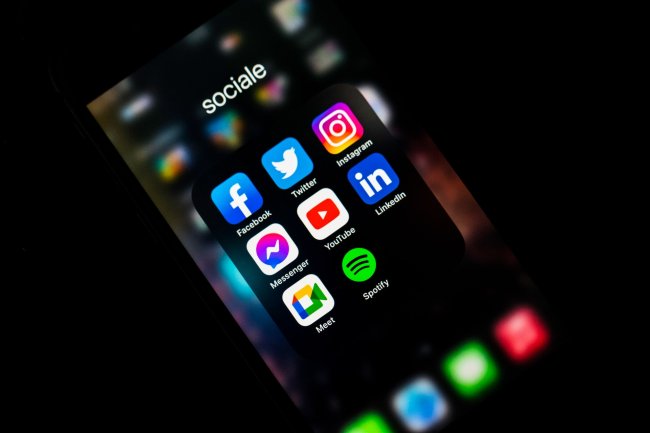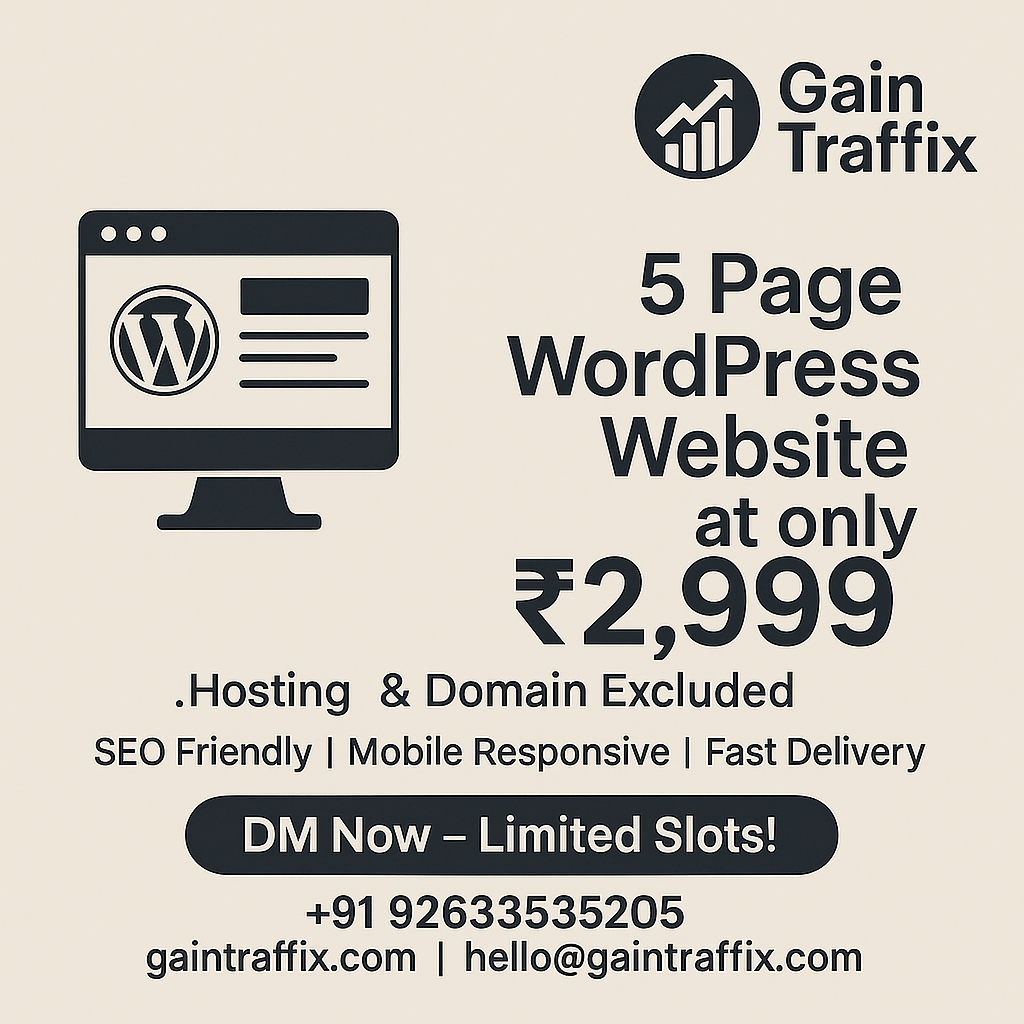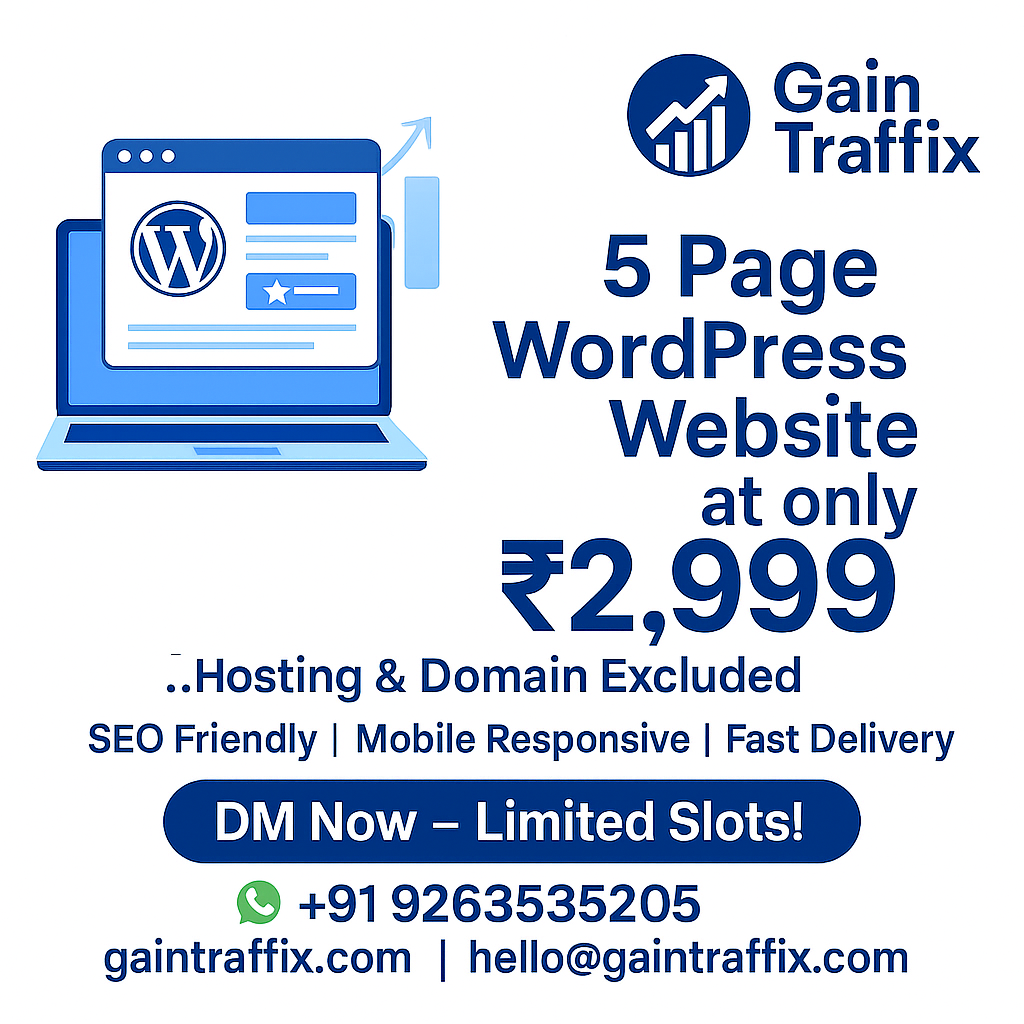How to Drive Traffic to Your Website with Facebook!
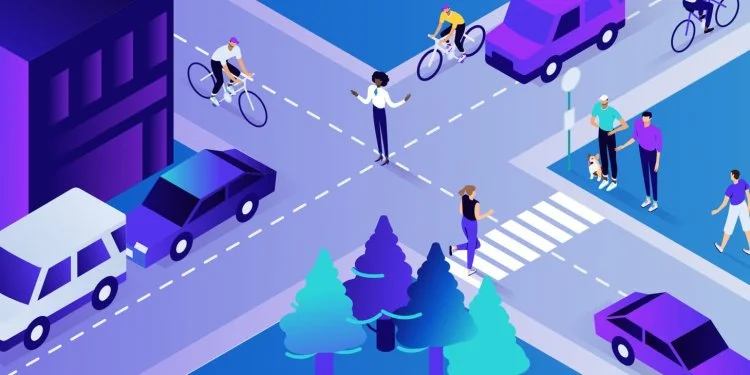
One of the most common inquiries we receive from clients revolves around the question: "How can I enhance the flow of visitors to my website by utilizing Facebook?"
This is an excellent query and one that every business with a presence on social media should address, but in the right manner. Oftentimes, we notice that brands tend to opt for the simplest approaches to boost website traffic when they should instead be focusing on the most effective methods. This is a crucial distinction to make, as simplicity often comes with a hefty price tag, whereas the best methods consistently yield more favorable outcomes.
Facebook stands out as one of the premier platforms for marketing in the realm of social media, and it's no surprise. It dominates the social media landscape with a commanding 70% market share, boasts an annual advertising revenue of $84.2 billion, and engages a whopping 1.73 billion daily active users, marking an 11% year-over-year increase. For brands, this translates into Facebook delivering the highest Return on Advertising Spend (ROAS) among all social media platforms, as well as driving more than 80% of all social referrals to eCommerce websites in the United States. Again, it's hardly surprising, considering that 78% of American consumers report discovering products they want to purchase through Facebook.
While these statistics are certainly impressive, they hold little significance for your business on their own. That is, unless you're effectively channeling traffic from Facebook to your website. Consequently, understanding the most effective digital marketing strategies and leveraging the available Facebook tools becomes crucial for your ability to achieve success and growth.
So, let's leverage these statistics to your advantage by exploring the most effective methods for increasing website traffic through Facebook for your site.
Paid social vs. organic social: which drives more traffic?
A good starting point is to determine the appropriate channel for your marketing strategy. In the case of Facebook, this decision involves choosing between utilizing organic content or investing in paid content.
Organic Content on Facebook refers to freely shared content among users, such as posts, photos, videos, and stories. It is most effective for nurturing your existing customer base.
Paid Content on Facebook, on the other hand, involves brands paying to share content with specific target audiences. This approach is ideal for reaching potential customers and converting them.
Typically, paid social media advertising offers superior return on investment (ROI) compared to organic social media, especially when it comes to driving traffic to your website.
However, it's important not to dismiss organic content entirely. In today's world of omnichannel marketing, relying solely on one platform is insufficient. Every marketing channel should complement one another. Facebook's combination of paid and organic content serves as an excellent example of this principle in action. Together, they enable effective targeting throughout the entire sales funnel, whether it's the top, middle, or bottom of the funnel.
It's worth noting that organic content can be transformed into paid content through a process known as "boosting." You've probably heard of it, and you might have even experimented with it. Boosting involves paying to expand the reach of previously shared organic content. However, when it comes to driving traffic to your website via Facebook, custom Facebook Ads are typically a better choice compared to boosting a post. While boosting is easier, Facebook Ads offer more control, which is often the superior option.
What Facebook ad type drives the most traffic?
The various advertising options offered on Facebook, also referred to as ad formats, include Image Ads, Video Ads, Carousel Ads, Collection Ads, Stories, Slideshow Ads, Messenger Ads, and Playables. Each of these ad formats comes with distinct advantages when your primary objective is to generate traffic from Facebook to your website. According to a survey conducted by the business analytics firm Databox, paid media experts preferred video, image, and carousel ads as the top choices for driving website traffic.
In the realm of digital marketing, we strongly recommend conducting tests to determine which formats yield the best results for your specific goals. However, if you're seeking a starting point, consider using these three formats.
In all likelihood, the most effective approach to maximize your advertising budget involves employing a blend of these formats. For instance, you could utilize video ads to enhance brand visibility and expand your Facebook audience, followed by image ads to retarget that audience for direct website clicks.
Pick the best ad objective for driving traffic
When creating a campaign, before you even pick your ad type you have to choose an “ad objective.” Think of ad types and ad objectives as the one-two punch of driving traffic to your site.
There are three different objectives for Facebook ads:
- Awareness
- Consideration
- Conversion
Each of these objectives in turn have several sub-objectives.
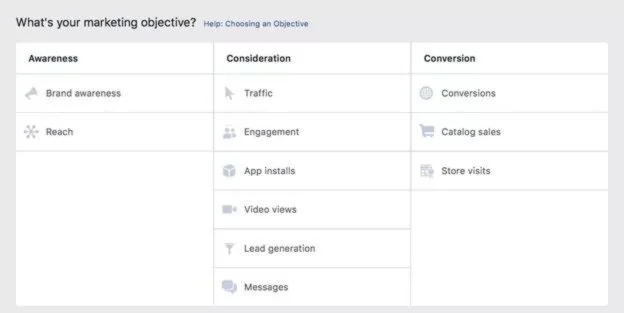
You can probably guess which one is best for driving traffic to your site. (Hint: It’s “Traffic.”)
The Traffic objective is specifically designed to generate website referral traffic and optimize CTR to your landing pages. Or at least it will be once you specify in your Ad Set which type of traffic you want to focus on.
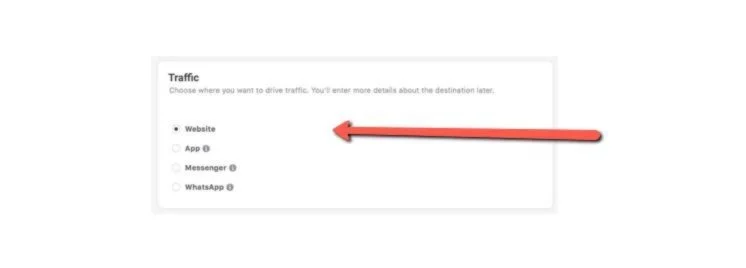
Facebook's ad goals go beyond being mere categorizations established by Facebook for advertisers to use as references. They have a pivotal role in determining the effectiveness of your ad in driving traffic. If you select an objective to boost website traffic, Facebook's algorithms will give preference to displaying your ads to users with a proven track record of clicking through to websites.
Optimize your ad delivery for higher traffic ROI
After establishing your advertising goal, the next step is to fine-tune how your ad is delivered. This can be adjusted in the Facebook Ads Manager while setting up your campaign, typically found at the bottom of the Ad Set section.
Here, you'll encounter four alternatives:
- Landing Page Views
- Link Clicks
- Daily Unique Reach
- Impressions
Among these choices, we advise opting for "Landing Page Views." This selection is particularly beneficial for businesses aiming to boost website traffic through Facebook, as its primary function is to facilitate the growth of website visitors.

To have the option to select "Landing Page Views," you must initially integrate the Facebook pixel into your website. After this integration, Facebook will attempt to display your ad to individuals who are most inclined to actually visit your page.
The emphasis here is on the word "view."
When someone clicks on the link in your ad, it doesn't necessarily guarantee that they have truly seen your page. Various scenarios could unfold during that time. Perhaps the page failed to load properly, or the user closed it before it loaded. Even the unlikely event of the user's computer malfunctioning could occur. The point is, you stand a better chance of reducing bounce rates and generating meaningful traffic by optimizing for "Landing Page Views" rather than just "Link Clicks."
But don't just take our word for it; let's see what Facebook recommends:
"If your objective is to boost traffic to particular pages on your website, we suggest prioritizing landing page view optimization over link click optimization, as the former can enhance the quality of traffic."
By choosing "Landing Page Views," you will reduce your cost per click (CPC), elevate your click-through rate (CTR), and precisely target your ad's reach. All of this translates to more traffic to your site and a reduction in your advertising expenses.
Optimize your landing pages for higher quality traffic
The highlighted point in the Facebook quote that stands out is the emphasis on enhancing the quality of website traffic.
Simply knowing how to bring visitors to your website via Facebook is not very beneficial if those visitors do not engage with your site's content. In fact, it can be detrimental, as high bounce rates can be a consequence. While having a large volume of traffic might seem appealing, it's only valuable if those visitors stick around and take actions on your site, such as exploring other pages, getting in touch with you, subscribing to a newsletter, making a purchase, and so on.
This is why the optimization of your landing pages is of utmost importance.
When you optimize your pages to attract more traffic, the objective is to ensure that your landing page content closely mirrors your ad content. This means that the images, videos, and messaging on your ad and landing page should be highly similar. Ideally, your page's content should seamlessly extend the promise made by your ad, creating a seamless user experience.
The end result is improved user retention.
A landing page is seldom an end in itself. Rather, think of it as the intermediary between your Facebook ad and your business objectives. To transition from one to the other, your landing page needs to retain the traffic initially attracted by your ad and channel it toward the other sections of your website.
Quality on-site content sells itself
Another crucial aspect of effectively driving website traffic through Facebook involves delivering high-quality on-site content that resonates with your audience.
As previously mentioned, aligning your ad content with your landing page is a smart strategy for improving ad performance metrics and minimizing bounce rates. However, the intrinsic value of quality content should not be underestimated. It's easy to become overly fixated on sales language, key performance indicators (KPIs), and brand promotion, losing sight of the bigger picture.
In truth, high-quality on-site content that genuinely adds value plays a significant role in increasing organic traffic. When the content is genuinely excellent, it can attract visitors from Facebook through shares, inbound interest, and even viral spread.
Rather than solely focusing on monetary gains, prioritize the user's satisfaction. Consider your target audience's ultimate objectives and strive to assist them in achieving those goals. If they have inquiries, address them comprehensively. If they're in the process of researching a product or service, provide them with precise, trustworthy information. When they're ready to convert, facilitate their journey through the sales funnel. Craft content that embodies the principles of "EAT" (Expert, Authoritative, and Trustworthy). Ultimately, by delivering high-quality content, you will naturally draw users to your website.
This approach results in increased content sharing across the Facebook platform, improved visibility within the algorithm, heightened user interactions, and broader reach, all without extra effort.
Examples of such content include on-site informational pages, About Us sections, blog posts, guides, category pages, multimedia website materials, FAQ pages, and more. When executed correctly, these can become powerful vehicles for generating off-site organic sharing.
Facebook even provides tools like Creator Studio to aid both individuals and businesses in content creation and monitoring.
This approach can lead to more genuine, organic outcomes that effectively drive traffic to your website.
Don’t forget to drive traffic with Instagram ads
Instagram boasts a staggering 1 billion monthly active users, so it's not enough to solely focus on directing Facebook users to your website. To maximize your advertising impact, consider expanding your ad campaigns to Instagram as well. The good news is that Facebook offers convenient options for cross-promotion between these two platforms.
However, it's crucial to avoid using the same creative content designed for Facebook when crafting ads for Instagram. For optimal ad performance and to attract higher-quality traffic, our recommendation is to create two distinct campaigns: one tailored exclusively for Facebook and another targeted specifically at Instagram. While these two campaigns can incorporate similar visuals and copy, keeping them separate ensures that your images align with each platform's unique requirements and that the ad copy resonates effectively with the respective audiences.
Update your Facebook Business Page to increase organic traffic
Up until now, our primary focus has been on paid content as the most effective means to generate website traffic via Facebook. However, it's crucial to acknowledge that paid content is not the sole strategy.
As previously mentioned, it's essential not to underestimate the impact of organic content. This can be tempting, especially given that the typical organic Facebook post reaches only 5.2% of your audience, meaning that just a small fraction of your followers actually see your unpaid content on Facebook.
Nonetheless, it's important to recognize that this seemingly discouraging statistic overlooks a significant factor: Paid content contributes to organic engagement on Facebook. Consider how often you've come across an advertisement or post on Facebook and clicked on the profile name at the top instead of the content within the post.
Each instance presented an additional opportunity to increase website traffic. This is why it's crucial to ensure that your Facebook business page is brimming with ways to direct traffic to your website. These possibilities manifest in the form of compelling page banners, timeline posts, sidebar content, and all the other elements featured on a profile page. Furthermore, they also offer the added benefit of enhancing brand visibility and optimizing the effectiveness of your content strategy.
So, if you ever feel that maintaining an updated Facebook page is a futile endeavor, think again. This is especially true if you are advertising on Facebook, as you could be overlooking effortless and cost-free chances to amplify your website's traffic.
Next step: drive site traffic from Facebook over the long term
The key element that has been absent from our previous suggestions is your brand.
While adhering to best practices can offer short-term benefits, building a strong brand is what paves the way for long-term growth. We readily acknowledge that our advice can only get you so far.
Is it essential to understand? Certainly.
Is it impactful? Without a doubt.
However, to elevate your strategies for boosting website traffic, we need to have a personalized conversation about your unique brand and business. This is something that cannot be adequately covered in a single publicly posted article on our website, but it can be addressed through a one-on-one phone call.
So, when you're prepared to tailor these tactics to your specific brand, please reach out to us to explore how to increase your website traffic with Facebook.
Your customers engage with your business because they connect with your brand, product, and services. Cultivate that relationship through your Facebook content. This will enable you to tap into one of the most sought-after marketing metrics — repeat traffic. While driving traffic to your site with Facebook is a valuable achievement, it's even more rewarding to have them return for more.
What's Your Reaction?















